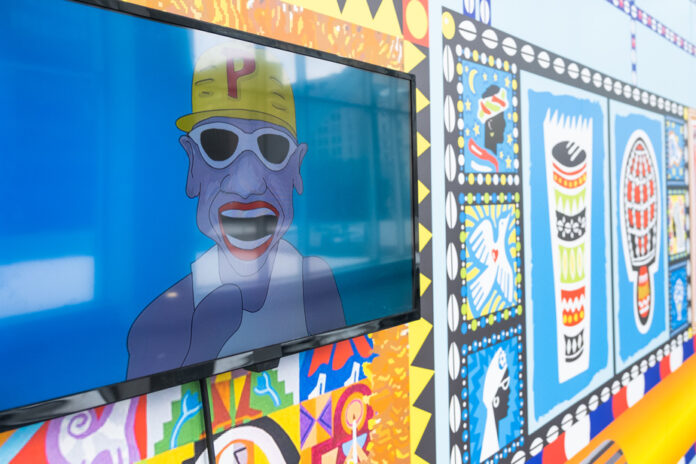Founded in 2009, the Underground Art Festival presents its 15th edition until April 9 in Montreal’s underground spaces, on the theme of the party. A celebration…of celebrations. With music, encounters, dances, sharing. But also the parties that get out of hand. Interesting artistic journey, free and starting today!
The Montreal festival of contemporary art will last three weeks this year, with the participation of some thirty artists who exhibit in the spaces of Place Ville Marie, the World Trade Center, the Palais des Congrès, the Jacques- Parizeau and the Place de la cité internationale. The theme of the party was born at the start of the pandemic when the founder of Underground Art, Frédéric Loury, realized that the health crisis had largely prevented us from celebrating, going out, meeting family and friends.
For this edition, Frédéric Loury surveyed the artist Jean-François Prost – who published La fête in 2021, an art book designed in Brazil. “With Jean-François and curators Eddy Firmin (Montreal) and Ayrson Heràclito (Brazil), we wanted to approach the party as an ecstasy, an opportunity for reunion and sharing, and that we also talk about isolation, distress and less fun aftermaths,” says Frédéric Loury.
We started our visit to Place de la cité internationale (tip: have the Underground Art plans with you!), with a mural by Ayrson Heráclito on the microcultures of Brazil displayed on a fairground float. Next to it, Toronto artist Camille Jodoin-Eng exhibits Disco Teardrop, a golden drop-shaped disco ball. The small mirrors marked with symbols project the light onto a large circular mirror placed on the ground. The disco ball, symbol of the parties of the 1970s.
In the basement, You Can Feel It All Over is a 30-minute sound work by Magali Babin that stems from interviews with maintenance, parking and security employees. We stop, we sit down and we listen to the testimonies and music extracts associated with the 22 people we met who talk about their approach to the party. Their birthday, Valentine’s Day, Christmas, Halloween, etc. A delicate work with people of various origins and therefore music of all styles. Interesting.
We then discover the photographs of David Champagne, very amusing. Big Dirty Fun shows people who are bored to death while everyone around them is partying! A work on the failure of certain quests for pleasure. Further on, photographs of feminist stagings by Annie Baillargeon evoke the backdrop of the party.
The underside of the fiesta is also the subject of the installation The Last Party, by Franco-Italian Mehryl Levisse. “Party as a metaphor for society,” he says. How minorities are crushed by social weight and discrimination. » A showcase and colorful photos of a party that is a little creepy or slips away.
Eddy Firmin became interested in the sound system. Hosting parties where simply listening to music played through a stereo has become a tradition that can be traced back to Jamaica in the 1940s. Jamaicans needed to be entertained when they did not have access to colonizer balls.
The route includes many images of South American or Caribbean populations dancing and celebrating in the public space. In the basement of the Jacques Parizeau building, you can also see three photographs by black and queer British artist Ajamu X, who celebrates LGBTQ black masculinity and the emancipation of the body. “A celebration of deeply sensitive intimacy,” says Eddy Firmin.
At the entrance to 950, rue du Square-Victoria, the work of Robbin Deyo is fixed to the windows of the building. Waves that mimic the musical rhythm. At the World Trade Center, on a staircase leading to the subway, an installation pays homage to Paradise Garage, the former New York nightclub where generations of young people partied in the 1970s.
Place Ville Marie, do not miss the video of the ants carrying confetti, by the Brazilian duo Cao Guimarães and Rivane Neuenschwander. A delicate work on the environmental consequences of the holidays. In the same place, musical performances are presented every Thursday.
Born in the wake of Nuit blanche, thanks to the impetus of Frédéric Loury and the initial help of Michel Labrecque, Underground Art is, once again this year, more than a deployment of art. It’s a way to animate and artistically transform the underground network of the metropolis. An animation that is too brief, we say to ourselves every year. In a city of design like Montreal, renowned for its “underground city”, Frédéric Loury would like our “Montreal catacombs” to become places of art throughout the year rather than for three weeks. “Artists, art lovers and tourists would appreciate it very much, but it takes funding,” he says. Have a good festival!















